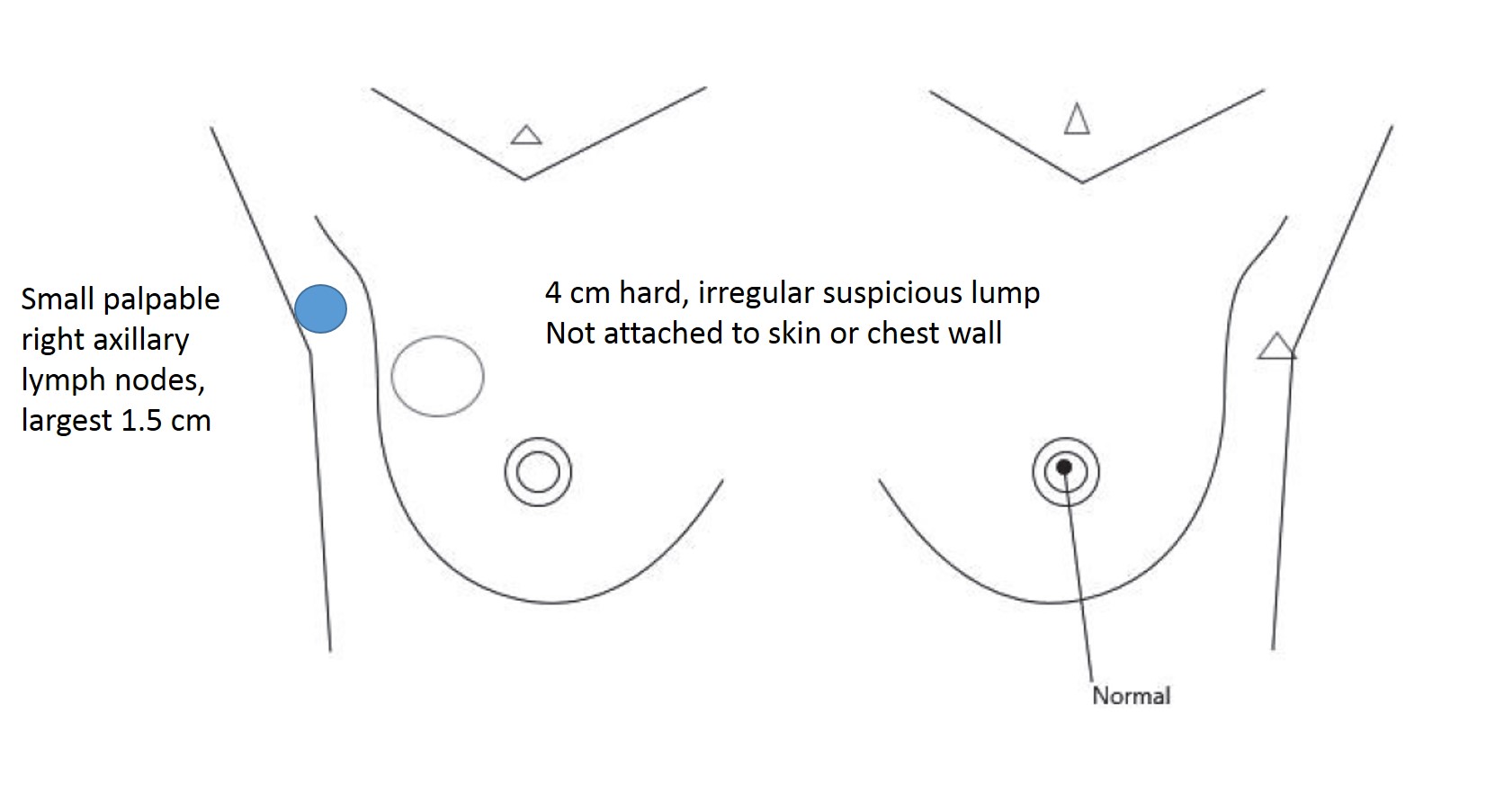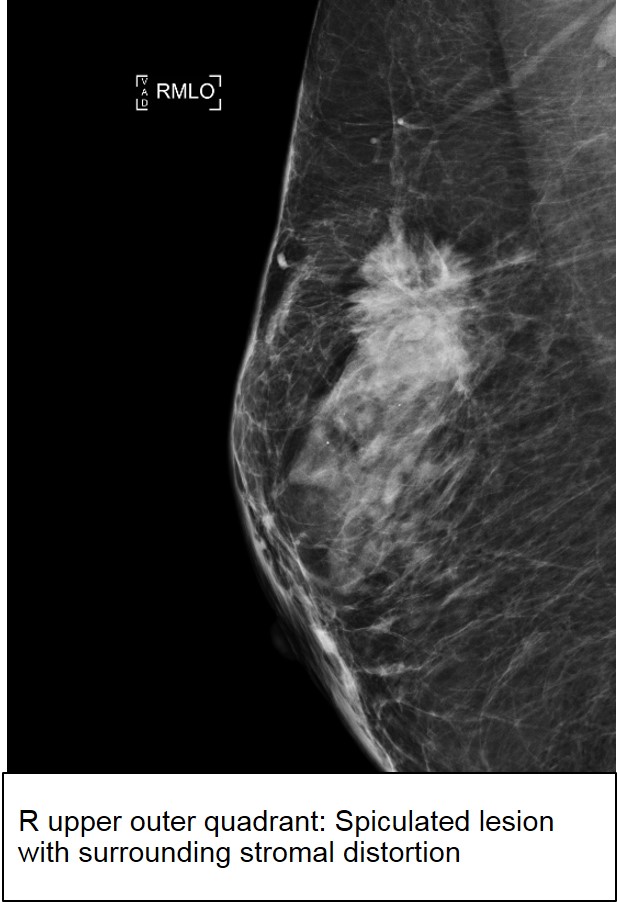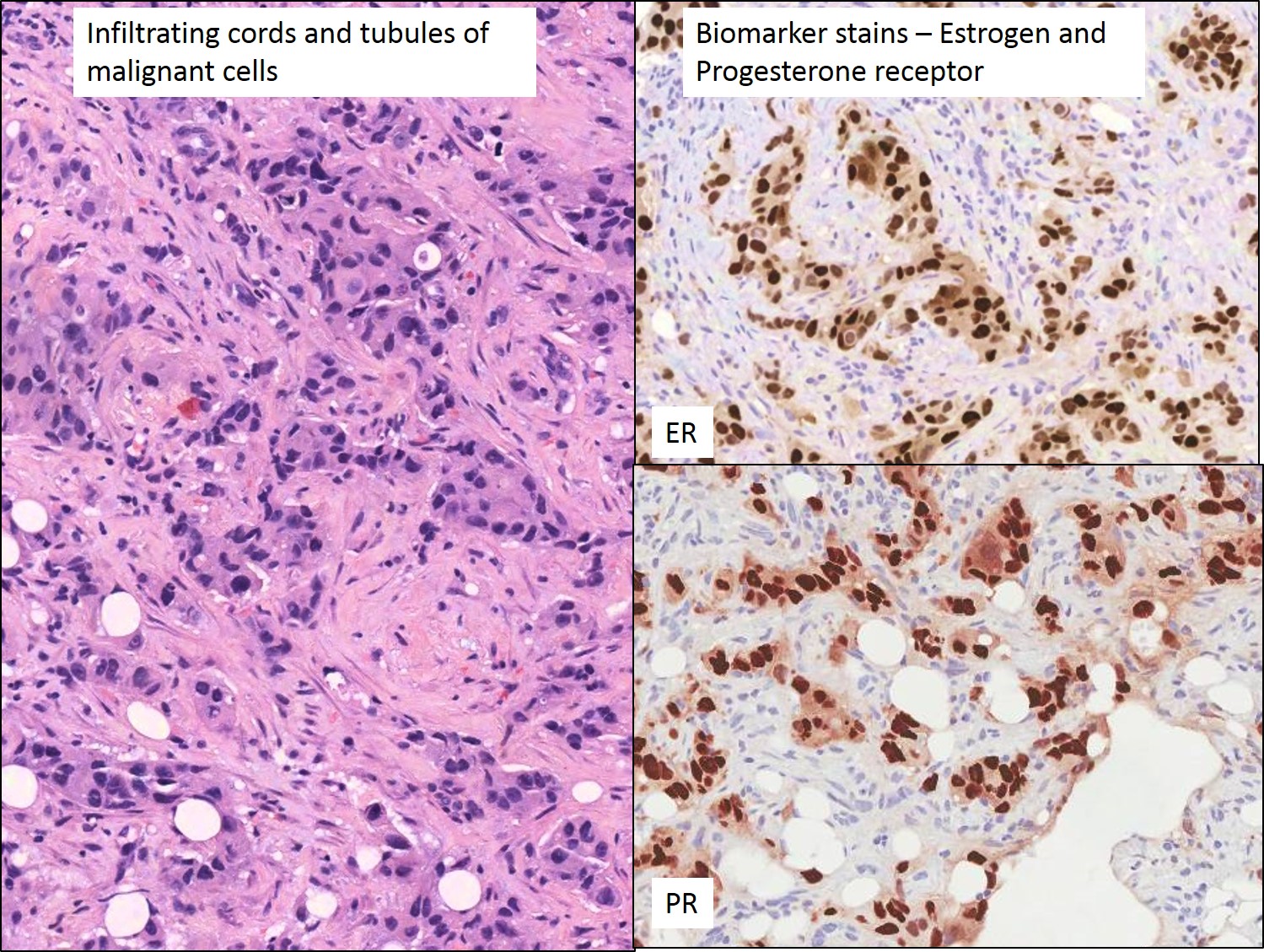See how a team of doctors manages a patient with a breast lump. At each step, think about what your role would be if you were the GP, or the medical officer in the specialist clinic.
I. Clinical History
Mdm Suppiah is a 63 year old lady with a breast lump. Her family brings her to the polyclinic.
1. Question: What would you do if you were the GP or polyclinic doctor seeing her for the first time?
Here are some options to consider, which would you choose?
- Order a mammogram and tell her to come back in 2 weeks.
- Refer her directly to the breast clinic in a restructured hospital for specialist assessment.
- Take a detailed history and examine her clinically before deciding what to do next.
After taking a directed history, a breast examination was done.
Summary of findings:
History – Self-palpated breast lump 2 months ago, not noticed to be enlarging. No noted loss of weight. No family history of malignancy.
Physical examination – 4cm firm, irregular non-tender right upper outer quadrant mass.
Action taken: Refer to specialist breast clinic in a restructured hospital for further investigation.
Mdm Suppiah is seen at the Breast Clinic in the National University Hospital one week later.

2. Question: What is your clinical diagnosis?
The diagnosis is breast cancer until proven otherwise.
The findings of a new lump that is hard and irregular in a patient of this age is very suspicious. The presence of palpable axillary lymph nodes is worrying for axillary nodal metastases.
3. Question: What would you do to confirm the diagnosis?
What Mdm Suppiah needs is rapid tissue diagnosis (biopsy) so that definitive management can be planned.
Remember the Triple Test: Clinical examination, Imaging and Pathology.
1. Imaging: A mammogram is ordered on the same day.

2. A core biopsy is ordered:
The pathologist's diagnosis was: 
The TRIPLE TEST is now done (clinical examination, imaging, biopsy), and the diagnosis is now made. The next step is to plan definitive management.
4. Question: The diagnosis is made. What is the needs to be done next?
After the diagnosis is made, the next step is to STAGE the tumour.
1. Staging: This usually involves imaging.
CT thorax, abdomen and pelvis was done to look for metastases (eg lung, liver, etc)
A bone scan was performed to look for bony metastases.
Results: All were negative.
2. The case was then discussed at the Breast multidiscplinary meeting – oncologists, radiation oncologists , surgeons, nurse managers, pathologists, radiologists attend.
Decision: Offer neoadjuvant chemotherapy (due to large size) and then surgery; OR surgery.
The patent opted for surgery. Mastectomy was performed, with axillary lymph node clearance.
II. In the Pathology Lab
1. Handling the Breast specimen. After surgery, the excised breast specimen (mastectomy) arrives in the Pathology Lab. The pathologist examines it and samples selected areas – this is known as Grossing or Trimming. Here is the pathologist in action.
2. Microscopic examination. After Grossing the specimen, the tissue is processed into microscopic slides. Here is how the pathologist then evaluates the slides to obtain important Diagnostic and Prognostic information.
Here is a step by step example of how histologic grading is performed on breast carcinoma (this is a different tumour example):
III. Final Pathology Report
The pathologist documents his/her findings into a succinct report. This a summary of the final histology report, with the most prognostically important information presented.

IV. Follow-up
Mdm Suppiah’s pathology and intraoperative findings would be again presented at the multidisciplinary Breast Team meeting, and the decision made on the post-operative management, follow-up and surveillance.
Acknowledgements: The videos feature Dr Wang Shi, Dr Wu Bing Cheng,and Dr Nga Min En, and are created by Noel Chia, Medical Student, Class of 2017, University of New South Wales.
